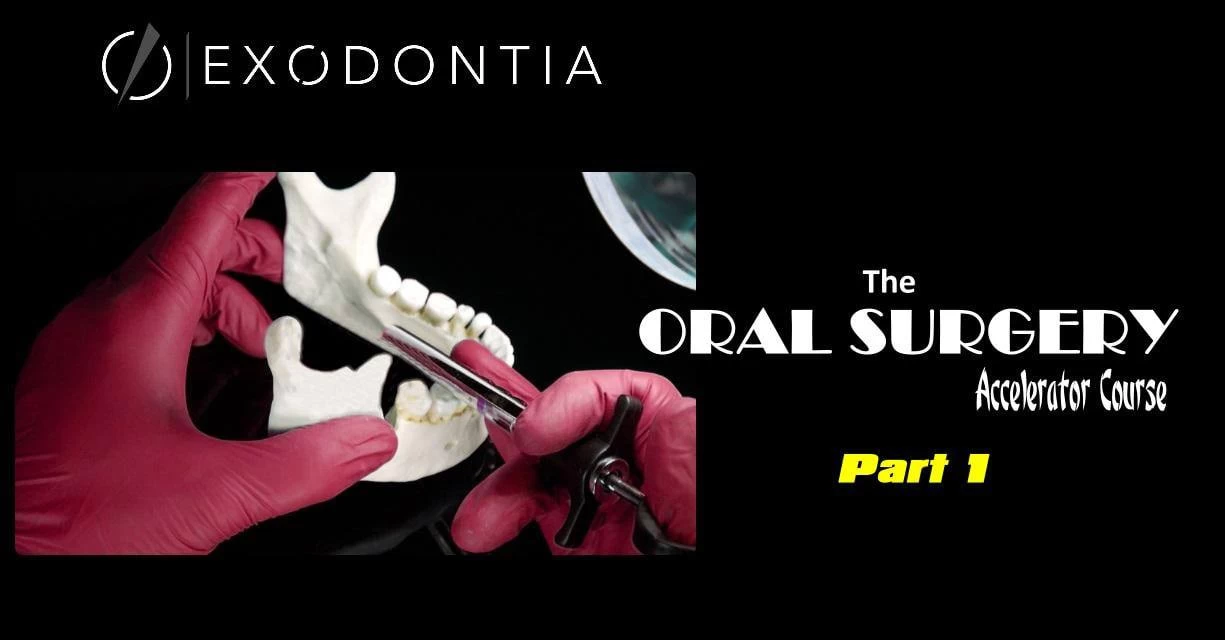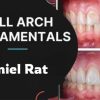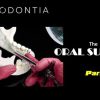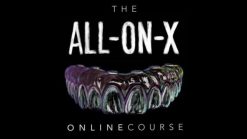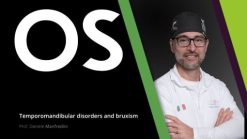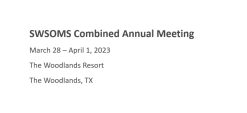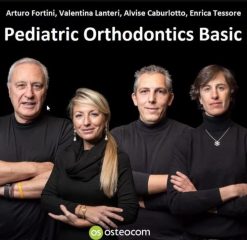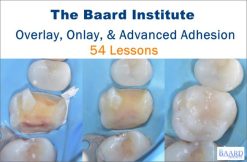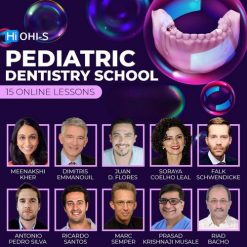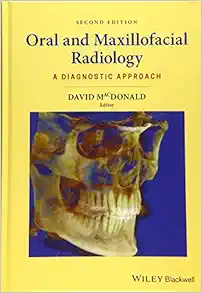Exodontia Comprehensive Oral Surgery – Jason Hoium Module 1-13
$75,00
Samples for Courses Can be found here : Free Samples Here!
Exodontia Comprehensive Oral Surgery – Jason Hoium
Exodontia Comprehensive Oral Surgery – Jason Hoium Module 1-13 Time is our most valuable resource… so when we trade it for something, it had better be worth it! OnlineExodontia.com pushes the boundaries of what it means to learn by pioneering a new style of online education that maximizes your time by providing only the most targeted, clinically applicable knowledge you’ll need to perform at a high level in private practice.
Category: Dentistry
Exodontia Comprehensive Oral Surgery – Jason Hoium
Exodontia Comprehensive Oral Surgery
Exodontia Comprehensive Oral Surgery – Jason Hoium Module 1-13 Time is our most valuable resource… so when we trade it for something, it had better be worth it! OnlineExodontia.com pushes the boundaries of what it means to learn by pioneering a new style of online education that maximizes your time by providing only the most targeted, clinically applicable knowledge you’ll need to perform at a high level in private practice.
Module 1-13
It’s Time…
Exodontia Comprehensive Oral Surgery – Jason Hoium Module 1-13 Time is our most valuable resource… so when we trade it for something, it had better be worth it! OnlineExodontia.com pushes the boundaries of what it means to learn by pioneering a new style of online education that maximizes your time by providing only the most targeted, clinically applicable knowledge you’ll need to perform at a high level in private practice. The returns from this course will be exponential for you on so many levels if you are up to the challenge! Join me and let’s get to it!
Module 1 | Oral Anatomy & Biology
- 1. Bone (Cancellous vs. Cortical)
- 2. The Periosteum
- 3. Gingiva
- 4. Periodontal Ligament Fibers
- 5. Inferior Alveolar Nerve
- 6. Long Buccal Nerve
- 7. Lingual Nerve
- 8. Mental Nerve
- 9. Maxillary Nerve
- 10. Greater Palatine Nerve & Artery
- 11. Incisive Foramen
- 12. Lymph Nodes
- 13. Granulation Tissue
- 14. Facial Artery & Vein
Module 2 | Medical Considerations
- 1. ASA Classifications
- 2. Hypertension
- 3. Diabetes
- 4. Asthma
- 5. Hyperthyroidism
- 6. Hypothyroidism
- 7. Anemia
- 8. Cardiac Issues
- 9. Artificial Joints
- 10. Antibiotic Prophylaxis for Endocarditis
- 11. Scarlet Fever
- 12. Osteoporosis
- 13. Liver Disease & Hepatitis
- 14. Hemodialysis
- 15. Hemophilia & Von Willebrand Disease
- 16. Pregnancy Pt. 1
- 17. Pregnancy Pt. 2
- 18. Chemotherapy
- 19. Radiotherapy
- 20. The Immunocompromised Patient
- 21. Medical Emergencies Pt. 1
- 22. Medical Emergencies Pt. 2
- 23. Medical Emergencies Pt. 3
- 24. Advanced Cardiac Life Support
Module 3 | Surgical Complications
- 1. Buccal Plate Fractures
- 2. Bleeding
- 3. Bone Chips
- 4. Postoperative Pain
- 5. Dry Socket (Alveolar Osteitis)
- 6. Immediate Postoperative Infections
- 7. Postoperative Swelling
- 8. Liver Clots
- 9. Hematomas
- 10. Damage to Adjacent Teeth
- 11. Wound Dehiscence
- 12. Tissue Tears
- 13. Extraction Socket Healing
- 14. Trismus
- 15. Burns & Avulsive Injuries
- 16. Puncture Injuries
- 17. Mylohyoid/Lingual Sequestrum
- 18. Broken Instruments
- 19. Buccal Fat Pad Exposure
- 20. Sinus Communications
- 21. Tuberosity Fractures
- 22. Displacement of Root Tips
- 23. Infratemporal Fossa Displacement
- 24. Osteomyelitis
- 25. Osteonecrosis
- 26. Managing Condylar Dislocations
- 27. Subcutaneous Air Emphysema
- 28. Paresthesia, Dysesthesia & Anesthesia
- 29. Lingual Nerve Injuries
- 30. Palatal Necrosis
- 31. Iatrogenic Jaw Fractures
- 32. Broken Needles
Module 4 | Infections & Fascial Spaces
- 1. Alveolar Ridge
- 2. Buccal Vestibule
- 3. Mandibular Subperiosteal Abscess
- 4. Mentalis Space
- 5. Submental Space
- 6. Sublingual Space
- 7. Submandibular Space
- 8. Ludwig’s Angina
- 9. Buccal Space
- 10. Submasseteric Space
- 11. Parapharyngeal Space
- 12. Palatal Subperiosteal Abscess
- 13. Infra-orbital Space (Canine Space)
- 14. Temporal Spaces (Deep & Superficial)
- 15. Infra-temporal Space
- 16. Infections
- 17. Delayed Postoperative Infections
Module 5 | Diagnosis & Planning
- 1. Indications for Extraction
- 2. Patient Examination & Interview
- 3. Patient Psychology
- 4. Radiographic Analysis for Extractions
- 5. Tips for Dental Radiographs
- 6. Extraction Planning
Module 6 | Drugs & Materials
- 1. Preoperative NSAIDS
- 2. Pain Management
- 3. Ibuprofen vs. Ibuprofen Sodium
- 4. Opioid Analgesics
- 5. Collaplug® vs. Gel Foam
- 6. Bone Wax & Bone Putty
- 7. Tranexamic Acid (Cyclokapron)
- 8. Alveogyl®
- 9. Warfarin (Coumadin)
- 10. Plavix (Clopidogrel)
- 11. Direct Oral Anticoagulants
- 12. Corticosteroids
- 13. Postoperative Antibiotics
- 14. Antibiotic Selection
- 15. Emergency Drugs
Module 7 | Local Anesthesia
- 1. Needle Gauge
- 2. Aspirating
- 3. Needle Capping
- 4. Local Infiltrations
- 5. Mandibular Infiltrations
- 6. PDL Injections
- 7. Papilla Injections
- 8. Intraseptal Injections
- 9. The Gate Control Theory of Pain
- 10. Palatal Injections
- 11. Greater Palatine Nerve Block
- 12. Nasopalatine Nerve Block
- 13. PSA Nerve Block
- 14. AMSA Nerve Block
- 15. ASA Nerve Block
- 16. High Tuberosity V2 Block
- 17. Pterygopalatine V2 Block
- 18. Intraoral Cervical Plexus Injections
- 19. Mental Nerve Block
- 20. Vazirani-Akinosi Technique
- 21. Buccal Nerve Block
- 22. Gow-Gates Technique
- 23. Inferior Alveolar Nerve Block
- 24. Alternative Mandibular Block Techniques
- 25. Failed Mandibular Blocks
- 26. Local Anesthetic Allergies
- 27. Local Anesthetic Complications Pt. 1
- 28. Local Anesthetic Complications Pt. 2
- 29. Temporary Facial Nerve Paralysis
- 30. Infections & Anesthesia
- 31. Anesthetic Carpules
- 32. Types of Local Anesthetic
- 33. Articaine
- 34. Topical Anesthetic
- 35. Epinephrine
- 36. Oraverse® (Phentolamine)
- 37. pKa
- 38. Local Anesthetic Buffering
- 39. Using Anesthetic to Diagnose
- 40. Pediatric Local Anesthesia Pt. 1
- 41. Pediatric Local Anesthesia Pt. 2
- 42. Anesthetizing for a Full Mouth Clearance
Module 8 | Surgical Armamentarium
- 1. Gloves
- 2. Magnification & Headlights
- 3. Oropharyngeal Protection
- 4. Bite Blocks
- 5. Scalpels
- 6. Surgical Handpieces
- 7. Surgical Burs
- 8. Surgical Suction
- 9. Retractors
- 10. Periosteal Elevator
- 11. Periotomes
- 12. Luxating Hybrid Elevators
- 13. EL3SX Elevating Luxator
- 14. 301 Elevator
- 15. 77R & 46R Elevators
- 16. 303 Apexo Elevator
- 17. 63 Spade Elevator
- 18. Cryer Elevators
- 19. Cogswell B & Crane Pick
- 20. Root Tip Picks
- 21. Steiglitz Forceps
- 22. English vs. American Style Forceps
- 23. 88L & 88R Forceps
- 24. 23 Cowhorn
- 25. 222 Forceps
- 26. 210S Forceps
- 27. Curettes
- 28. Rongeurs
- 29. Bone Files
- 30. Hemostats
- 31. Tissue Forceps
- 32. Needle Drivers
- 33. Scissors
- 34. Castroviejo Needle Drivers
- 35. Austin Retractor
- 36. Dental Explorer
- 37. S-12 Straight Surgical Handpiece
- 38. 35cc Irrigating Syringe
- 39. Drop Control Scalpel
- 40. Blue Surgical Suction Tips
- 41. Serrated Minnesota Retractor
- 42. Lucas Serrated Curette
- 43. 60B Elevator
- 44. Modified Isodry Isolation
- 45. Potts Elevators
- 46. Warwick James Elevators
- 47. Corn Suture Pliers
Module 9 | Surgical Technique
- 1. Forceps Grip Pressure
- 2. Patient & Operator Positioning
- 3. How to Use An Elevator
- 4. Overhand vs. Underhand Forceps Grasp
- 4. Basic Principles of Extractions
- 6. Proper Application of Forces
- 7. Purchase Points
- 8. Incisions
- 9. Incision & Drainage Pt. 1
- 10. Incision & Drainage Pt. 2
- 10. Basic Principles of Flaps
- 12. Envelope Flaps
- 13. Three-cornered Flaps
- 14. Four-cornered Flaps
- 15. Buccal Advancement Flap
- 16. Sectioning Maxillary Molars
- 17. Sectioning Mandibular Molars
- 18. Sectioning Premolars
- 19. Bone Removal
- 20. Troughing
- 21. Distobuccal Elevation
- 22. Socket Debridement
- 23. Interproximal Contacts
- 24. Socket Irrigation
- 25. Forceps Force Vectors
- 26. Finger Rests
- 27. Extraction Positioning
Module 10 | Extracting Specific Teeth
- 1. Mandibular Incisors
- 2. Mandibular Canines
- 3. Mandibular Premolars
- 4. Mandibular Molars
- 5. Erupted Mandibular Third Molars
- 6. Maxillary Centrals
- 7. Maxillary Laterals
- 8. Maxillary Canines
- 9. Maxillary Premolars
- 10. Maxillary Molars
- 11. Erupted Maxillary Third Molars
- 12. Pedodontic Exodontia
- 13. Primary Upper Second Molars
- 14. Primary Upper First Molars
- 15. Primary Upper Canines
- 16. Primary Upper Lateral Incisors
- 17. Primary Upper Central Incisors
- 18. Primary Lower Second Molars
- 19. Primary Lower First Molars
- 20. Primary Lower Canines
- 21. Primary Lower Lateral Incisors
- 22. Primary Lower Central Incisors
- 23. Primary Root Tips
Module 11 | Suturing 101
- 1. Suture Needles
- 2. Monofilament vs. Polyfilament Sutures
- 3. Absorbable vs. Non-Absorbable Sutures
- 4. Suturing Fundamentals Pt. 1
- 5. Suturing Fundamentals Pt. 2
- 6. Suture Nomenclature
- 7. Holding The Needle Driver
- 8. Palming The Needle Driver
- 9. Gathering The Suture
- 10. Controlling The Suture
- 11. Needle Arc
- 12. Simple Interrupted Suture
- 13. Figure Eight Suture
- 14. Horizontal Mattress Suture
- 15. Locking Horizontal Mattress Suture
- 16. Vertical Mattress Suture
- 17. Locking Vertical Mattress Suture
- 18. Modified Vertical Mattress Suture
- 19. Continuous Suture
- 20. Continuous Locking Suture
- 21. Buried Knots
- 22. Knot Slippage
- 23. Surgeon’s Slip Knot
- 24. Hand-Tying Sutures
- 25. Suture Removal
- 26. Common Suturing Errors
- 27. Suturing Tips
- 28. Tongue Laceration
- 29. Stellate Laceration (Corner Stitch)
Module 12 | Clinical Tips & Situations
- 1. Orthodontic Extractions
- 2. Protecting the Airway
- 3. Diagnosing & Managing Pericoronitis
- 4. Buccal & Lingual Decay
- 5. Extracting Malaligned
- 6. Partially Soft Tissue Covered Roots
- 7. Impacted Third Behind a Mandibular Second
- 8. Endodontically Treated Teeth
- 9. Hypercementosis
- 10. Internal & External Resorption
- 11. Ankylosis
- 12. Fused Upper Molar Roots
- 13. Retained Roots in Edentulous Patients
- 14. Sectioning Tips
- 15. Sectioning Primary Molars
- 16. Extraction of Retained Primary Teeth
- 17. Impaction vs. Primary Retention & Secondary Retention
- 18. Managing Root Tips
- 19. Oroantral Communications
- 20. Extracting the Wrong Tooth
- 21. Tips for Multiple Extractions
- 22. Proper Gauze Placement
- 23. Iatrosedation
- 24. Molar Incisor Hypomineralization
Module 13 | Mastering Impactions
- 1. Third Molar Development
- 2. Theories & Causes of Impaction
- 3. Sequelae of Impacted Third Molars
- 4. Third Molar White Paper Pt. 1
- 5. Third Molar White Paper Pt. 2
- 6. Third Molar White Paper Pt. 3
- 7. A.A.O.M.S Position Statement on Third Molars
- 8. Prophylactic Third Molar Removal Pt. 1
- 9. Prophylactic Third Molar Removal Pt. 2
- 10. Mandibular Anatomical Overview
- 11. Maxillary Anatomical Overview
- 12. The Dental Follicle
- 13. CBCT Imaging vs. Panoramic Radiographs
- 14. IAN Proximity
- 15. Classification Systems
- 16. Case Selection
- 17. Surgical Consent
- 18. Surgical Site Preparation
- 19. Third Molar Anesthesia
- 20. Lingual Infiltration
- 21. Flap Design
- 22. The Incision Pt. 1
- 23. The Incision Pt. 2
- 24. Flap Elevation & Retraction
- 25. Bone Removal & Troughing Pt. 1
- 26. Bone Removal & Troughing Pt. 2
- 27. Purchase Points
- 28. Sectioning
- 29. Elevation & Force Application
- 30. Wound Debridement
- 31. Wound Closure Pt. 1
- 32. Wound Closure Pt. 2
- 33. Mesioangular Impactions
- 34. Horizontal Impactions
- 35. Vertical Impactions
- 36. Distoangular Impactions
- 37. Maxillary Impactions Pt. 1
- 38. Maxillary Impactions Pt. 2
- 39. Managing Postoperative Bleeding
- 40. Third Molars & Antibiotics
- 41. Coronectomy
Related products
$50,00
Dentistry
$20,00
$90,00
Dentistry
$50,00

